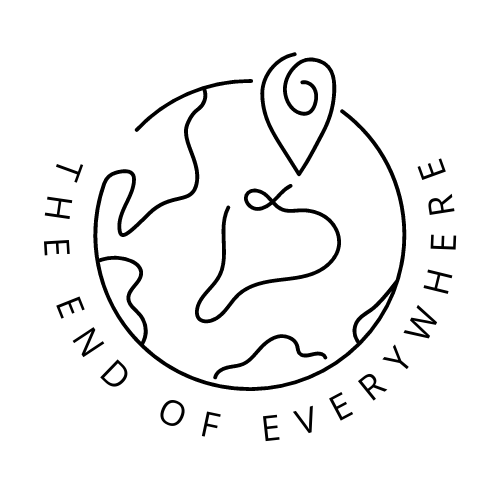Europe.
Europe is our home continent and where we have travelled most.
Why travel in Europe? We love it. It’s the diversity of cultures, languages, lifestyles and cuisines packed into such a small area. It’s the mountains and lakes, the beaches and forests. It’s the sprawling cities and the tiny villages with cobbled streets. It’s the history.
We are lucky enough to be of the ‘EasyJet generation’ that has made the most of cheap flights for budget travel. We spent our 20s enjoying long weekends on the continent, as well taking the opportunity to Interrail for an in-depth travel experience by train. From major cities to Europe off the beaten track, have a read of our experiences below.
Europe Blog Posts
How to plan a visit to Europe…
Why visit Europe?
Europe is a continent with a rich and dark history that is visible as you walk through the streets. Despite being small compared to other continents, it contains some of the world's most visit attractions, like Paris's Eiffel Tower and Rome's famous Colosseum. It also has incredible food and drink experiences, like tasting your way through the history of vodka or world famous Italian and Mediterranean cuisine.
As well as bustling cities packed with history, you can explore romantic villages with cobbled streets, mountain ranges like the Alps and the Dolomites make Europe a paradise for both summer hiking and winter sports, and there is an astounding range of different cultures packed into a very small geographical space.
From Greek philosophy to modern art, there's something for everyone to enjoy in this diverse continent. With so much to explore, it's a great destination for bite-sized holidays, or plan your very own Euro trip to delve deeper into this fascinating place.
What is the best month to visit Europe?
The best time to visit Europe depends on your travel priorities and what you're after. If you want the best weather for a summer holiday, European summer runs from June to August. This is when prices are highest and you must book in advance.
For better value, visit during the shoulder seasons of April-May and September-October, where you'll find cheaper accommodation and fewer crowds - but in more remote places some businesses may close.
For winter sports, peak skiing is December to February, but there can be good snowfall either side of this. To catch the elusive Northern Lights, your best chances are November to March.
If your main aim is to explore cities, the shoulder seasons are probably the best time of year. It's not too hot or cold and there are fewer tourists around.
Keep in mind that a rain shower is not out of the ordinary no matter the season and - especially in Northern Europe - getting rained on is all part of the authentic travel experience!
What are the best places to visit in Europe?
The best places to visit all comes down to what you want to experience. The most-visited countries in Europe include France, Spain and Italy, with most popular cities including London, Paris and Rome. In terms of attractions, there are so many famous, bucket-list worthy places that have had monumental roles in history, stunning architecture or have starred in TV and film. Sagrada Familia, the Acropolis, the Sistine Chapel… it is impossible rank these, or even to say they are more worthy of visiting because of their fame.
But for as many world-famous sights on the continent, there are lesser-known places that are just of deserving of the spotlight. The sunsets off the coast of the Albanian Riviera might make the crowds in Santorini think twice, Bulgaria’s ski resorts can rival the Alps, and the still, deep waters of Lake Ohrid are an alternative to the Italian Lakes. Our advice is to have a sense of adventure, drink in the things you’ve always dreamt about seeing and to make an effort to explore further afield.
What is the best way to get around Europe?
There are plenty of options for travelling around Europe that are flexible depending on your time and budget.
For those with more time and looking to save costs, there is an extensive bus and rail network operating through Europe. In peak season, popular routes need to be booked in advance. Invest in an Interrail (or Eurail) ticket for great value when travelling by train for an extended period of time. Within European cities there is usually a mixture of taxis, bus, tram, underground metro and trains to help you get around, depending on the size of the place.
For ultimate flexibility, hire a car. Companies like Europcar operate across Europe and the easy border crossings mean you can design your own itinerary and get off the beaten track.
If budget allows and you are short on time, short-haul airlines operate routes throughout the continent. Whilst this is the best option for hopping between prime locations in a short amount of time, consider the environmental impact of your travels. We personally love the slow travel experience through the stunning European countryside.
How far in advance should I plan a trip to Europe?
If you’re planning to travel to Europe from a different continent, flights are best booked four to six months in advance to find the best airfares. For travel within Europe, the abundance of low-cost airlines mean a trip can be planned at shorter notice for good value.
When it comes to accommodation, the large and medium sized cities have a range of options available at different budgets, meaning you have some flexibility to be spontaneous on your trip. In peak season, though, you’ll still need to book a few weeks in advance. If you’re travelling to a remote place with limited options or if you have your eye on somewhere specific, book as soon as possible - you don’t want to miss out!
When it comes to trains and buses, you can usually buy tickets on the day you want to travel. Popular routes - for example overnight trains or between two well-visited destinations, may need to be booked in advance, but usually a few days is enough.
How much does it cost to travel in Europe?
There is a huge difference in costs when travelling throughout Europe, but there are options for all budgets throughout the continent. In major, Western European cities like London, Paris or Barcelona the pennies can easily stack up, with hotel rooms, food, drink and experiences costing more. However, the popularity of these cities means there is a good choice of money-saving options available for the budget travellers, with hostels, free city tours, set menu meals and seeking out free attractions being good ways to keep costs down. If you want to experience the glittering cities like Rome or Berlin, or seaside glamour in Nice or Santorini, either be prepared to spend or to compromise on luxuries if you are on a budget.
Saying this, there are plenty of locations that are more suited to a budget traveller and allow those with a smaller budget to have a luxury experience at an affordable cost. Try exploring further into Eastern Europe, where there are often fewer visitors but still plenty of amenities for visitors. Travel networks aren’t quite as developed in some places, but with planning a patience it is entirely possible to get through the area on public transport - and it’s wallet-friendly, too!









Welcome to the beaches and history of Croatia, the gastronomy of Italy, and the natural wonders of Slovenia, all in one. Istria, a heart-shaped peninsula in Northern Croatia, has it all. Here is our 8-day itinerary for beautiful Istria